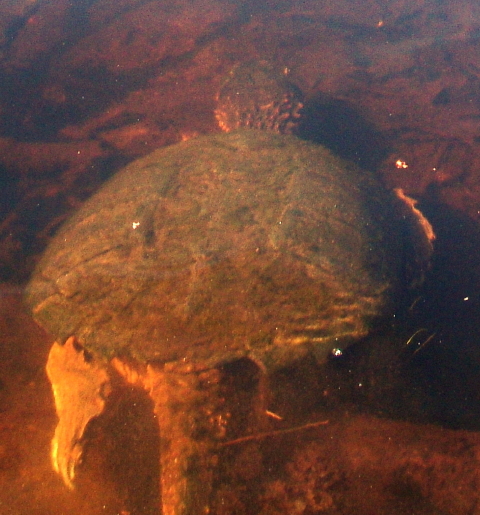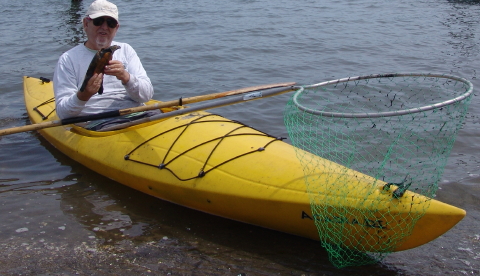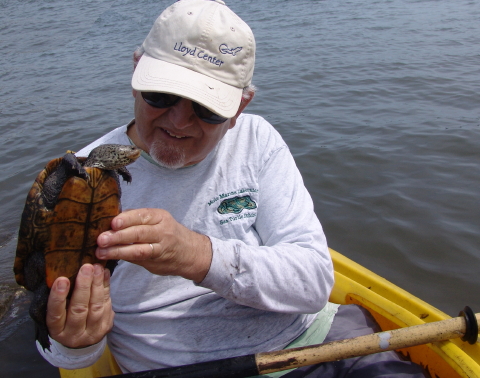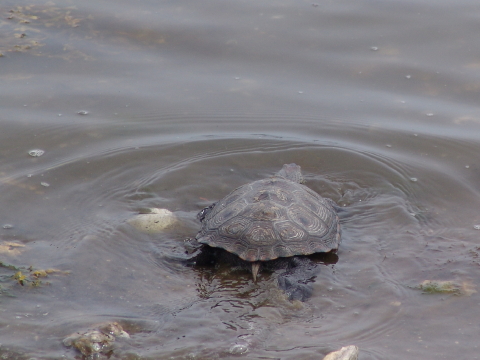Snapping Turtle (Chelydra serpentina)Â — Click to Enlarge
Welcome to pre-history. Welcome to a time before time when giant reptiles ruled the earth and fury little mammals shivered in the reeds. Whenever snapping turtles rise from winter brumation, time quakes and it seems to Turtle Journal as though dinosaurs rule once again.  I defy you to examine the tail of this splendid specimen without envisioning an ancient dinosaur.
The Land Time Forgot (in Marion, MA)
Today Turtle Journal ventured to the Land Time Forgot in Marion, Massachusetts. Even in full sunlight, this area conveys a sense of claustrophobic forboding as dense canopy melds with thick underbrush. The opaque murkiness of the water adds to the allusion of a place frozen in a forgotten time.
Modern Day Pterodactyl:Â Great Blue Heron
Reinforcing the mood of a lost time, modern day pterodactyls (great blue herons) glide through the air while serenading the wetlands with raucous “frahnks” that echo through tree tops and ripple across the pond like the imagined calls of extinct dinosaurs.  The rich odor of fetid swamp, accented with blizzards of gnats, nails the scene as straight out of a classic 1950s horror script.
Giant Snapping Turtle Claws through the Murk
As we slipped expectantly down the path, the moment got trapped in paralyzing stillness, the same sense that besets films whenever something really dreadful is about to occur. And on cue, out of the murky blackness, a behomoth clawed the water to reach the brambled bank underneath our feet.Â
Snapping Turtle in Marion, MA
We stopped … walking and breathing … as this large snapping turtle wedged himself under the bank, waited a few minutes and then pushed off toward the depths, disappearing into total blackness within just a few feet of the bank. Turtle Journal loves snapping turtles; they are a direct linkage to a world we only know through fossils and imagination. Turtle Journal respects snapping turtles; they are truly awesome, especially when they appear and disappear as if by cinema magic.
























